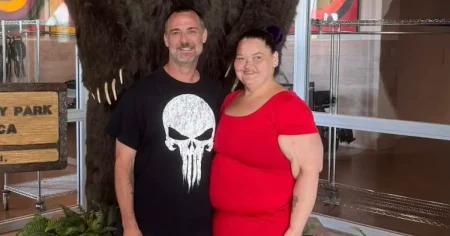Grace and Frankie: Finding Friendship After Divorce
In the heartwarming Netflix sitcom “Grace and Frankie,” we witness an unlikely friendship bloom from the ashes of marital devastation. The story begins with a shocking revelation: Grace Hanson (portrayed by the elegant Jane Fonda) and Frankie Bergstein (brought to life by the incomparable Lily Tomlin) discover that their husbands have fallen in love with each other and want divorces. This bombshell doesn’t just end their marriages; it completely upends their carefully constructed lives and forces these two women—who previously barely tolerated each other—to become reluctant roommates in a beach house they once shared as couples. What starts as an uncomfortable living arrangement gradually transforms into one of television’s most authentic and endearing friendships, proving that sometimes life’s most painful disruptions can lead to its greatest gifts.
The genius of the show lies in the delightful contrast between its protagonists. Grace, with her impeccable appearance and corporate background, approaches life with structure, martinis, and a no-nonsense attitude. Frankie, on the other hand, embraces chaos with her artistic spirit, spiritual practices, and free-wheeling approach to everything from fashion to food. Initially, these differences create friction that provides much of the show’s comedy—Grace’s exasperation at finding Frankie’s homemade yam lube in the refrigerator or Frankie’s horror at Grace’s rigid routines. Yet as the series progresses, we watch these women not only accept their differences but come to value them. Grace learns to loosen up and embrace life’s messiness, while Frankie benefits from some of Grace’s practicality and determination. Their friendship becomes a testament to the beauty of complementary personalities and the strength found in embracing others’ uniqueness rather than trying to change it.
What makes “Grace and Frankie” particularly refreshing is its unflinching focus on later-life challenges rarely depicted on television. The show tackles dating after 70, sexuality among older adults, health scares, ageism in the workplace, and the changing relationship dynamics with adult children—all with humor and heart. When Grace and Frankie launch their business selling ergonomic vibrators for older women with arthritis, the show manages to be simultaneously hilarious and revolutionary in its matter-of-fact approach to senior sexuality. Their business venture also showcases their growth: Grace contributes her business acumen while Frankie adds creative innovation, demonstrating how they’ve learned to leverage each other’s strengths. Through various romantic relationships, health challenges, and family dramas, the show reminds viewers that life’s adventures don’t end at retirement—they simply take new forms.
The supporting cast adds rich complexity to the narrative, particularly through the relationships with their children and ex-husbands. Robert (Martin Sheen) and Sol (Sam Waterston) navigate their new life together with a combination of joy and guilt, while maintaining connections with their former wives that evolve throughout the series. The adult children—played by Brooklyn Decker, June Diane Raphael, Baron Vaughn, and Ethan Embry—provide both comedic relief and emotional depth as they adjust to their parents’ new realities while managing their own life challenges. These intergenerational relationships highlight how family bonds bend but don’t break through major life transitions, and how parents and children continue to learn from each other at every stage of life. The show excels at portraying the messiness of modern family dynamics with both humor and tenderness, never shying away from difficult conversations or uncomfortable growth.
As the series progresses, “Grace and Frankie” deepens its exploration of aging with dignity and purpose. Both women face moments of feeling invisible or dismissed in a youth-obsessed culture, yet they consistently refuse to retreat into stereotypical grandmotherly roles. When Grace returns to the beauty company she founded only to be marginalized by younger executives, or when Frankie advocates for better conditions at her assisted living facility, they demonstrate a refusal to be silenced or sidelined. Their resilience in the face of health scares, romantic disappointments, and societal dismissal becomes increasingly inspiring. The show’s genius lies in balancing these more poignant moments with consistent humor—whether it’s the women’s misadventures with technology, recreational drugs, or dating apps. By making us laugh with Grace and Frankie rather than at them, the show fosters genuine respect for its protagonists while acknowledging the universal challenges of growing older.
Created by Friends co-creator Marta Kauffman and sitcom veteran Howard J. Morris, “Grace and Frankie” stands as a testament to what television can achieve when it values stories about women in their later years. The chemistry between Fonda and Tomlin (who previously worked together in the classic film “9 to 5”) elevates the material, making even simple conversations sparkle with wit and emotional authenticity. Their performances capture the vulnerability beneath their characters’ bravado—Grace’s fear of being unloved and Frankie’s anxiety about being left behind. As they navigate their new normal together, these women demonstrate that friendship can be a life raft through life’s roughest waters. In a media landscape often obsessed with youth, “Grace and Frankie” reminds us that new beginnings, personal growth, and meaningful connections remain possible at any age. With its perfect blend of humor and heart, the show celebrates resilience, reinvention, and the beautiful complexity of female friendship in later life.














